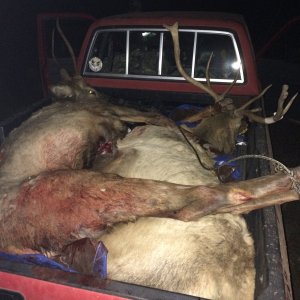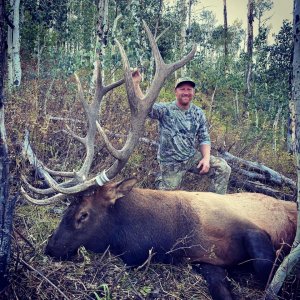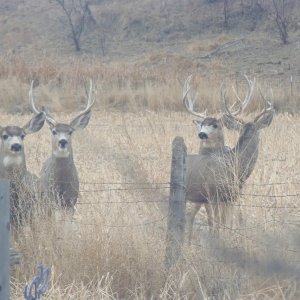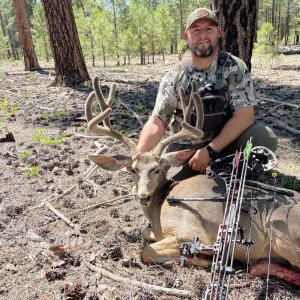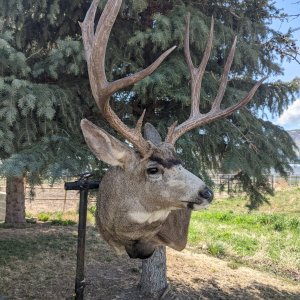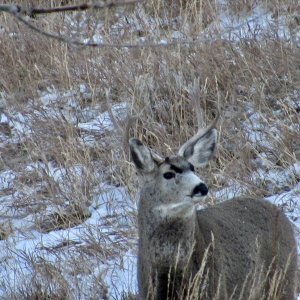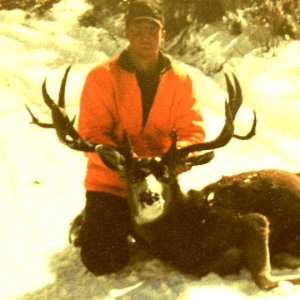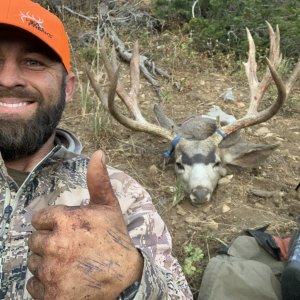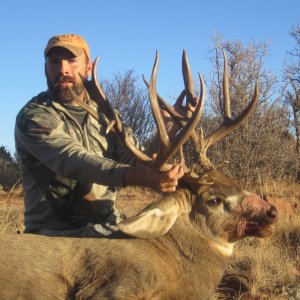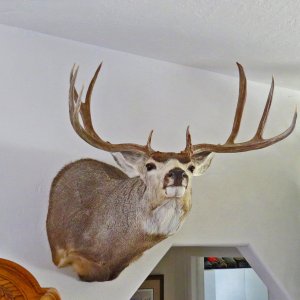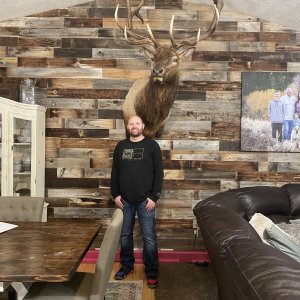Ticks N Tines
Very Active Member
- Messages
- 1,647
Many of us thought that this was going to be a banner year for antler growth. We had a very mild winter in 2014-2015 and a nice wet spring in 2015. There was plenty of grass and excellent feed in the high country. I had a Wyoming region G tag and witnessed firsthand that there was excellent feed/water all through the summer. The deer stayed very healthy and they arrived to the winter range heathly as well.
So far, I have documented 13 mature bucks that have returned once again to the winter range (From Region G). Only 2 of the 12 bucks have larger antlers. One only gained mass, the other gained a bit of length. One of the bucks is 10+ years old, so I didn't expect him to get bigger. However, his 9th year was his biggest year (Prime?). The other bucks are nearly identical or lost mass/length. I realize that age also plays a part with some of these bucks. However, I have heard a few ideas about why this was acutally NOT a banner year for growth.
Can any of you experts elaborate on this? I'm interested in hearing thoughts from you old timers that have been up and down the mountian a few times and seen a lot of mule deer.
I won't post comparisons of all the bucks I have seen, but here's one interesting pic. One would think this is a young buck with plenty of growing to do. Yet, he came back identical. Strange...

I think this could be a good discussion. What are everyone's thoughts?
Thanks,
HJB
So far, I have documented 13 mature bucks that have returned once again to the winter range (From Region G). Only 2 of the 12 bucks have larger antlers. One only gained mass, the other gained a bit of length. One of the bucks is 10+ years old, so I didn't expect him to get bigger. However, his 9th year was his biggest year (Prime?). The other bucks are nearly identical or lost mass/length. I realize that age also plays a part with some of these bucks. However, I have heard a few ideas about why this was acutally NOT a banner year for growth.
Can any of you experts elaborate on this? I'm interested in hearing thoughts from you old timers that have been up and down the mountian a few times and seen a lot of mule deer.
I won't post comparisons of all the bucks I have seen, but here's one interesting pic. One would think this is a young buck with plenty of growing to do. Yet, he came back identical. Strange...

I think this could be a good discussion. What are everyone's thoughts?
Thanks,
HJB








